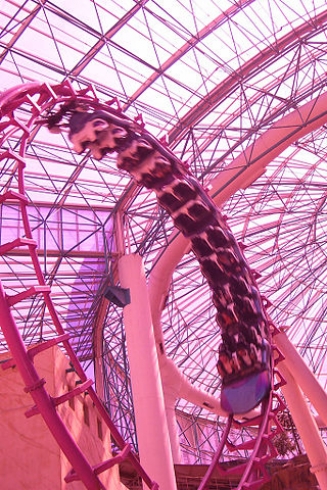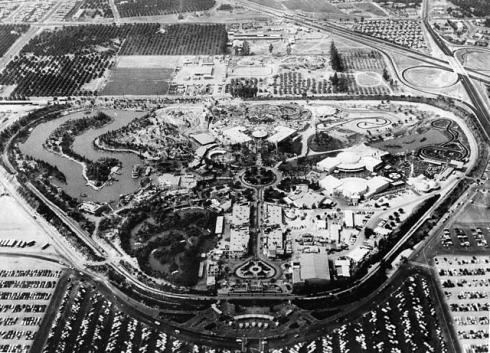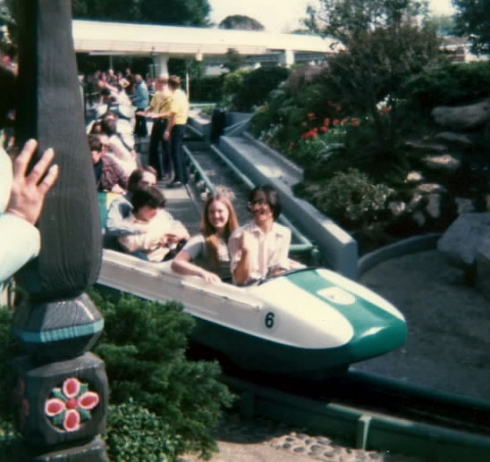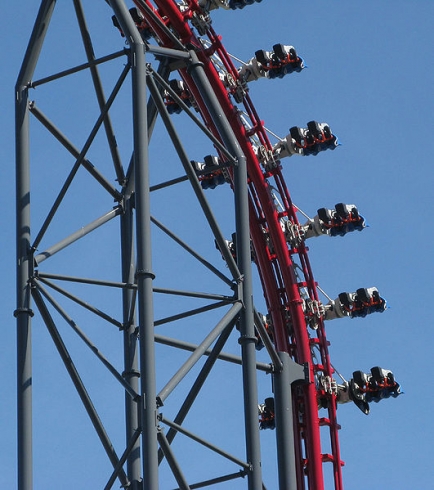
Theme Park Tourist takes a trip down coaster memory lane taking a look back at how Arrow Dynamics changed the industry as we know it.
Modern day roller coasters claim to have it all. They go taller, faster and more loopier than ever thought possible. Now, coaster-craving fans living in the 21st century have a thrill seeking paradise right at their doorsteps as modern technology is pushing human endurance and thrill factors to new extremes. The records appear to be pouring out of park gates almost as rapid as the coasters are turning stomachs as the competition to be the best intensifies. With such a diverse range of coasters at the finger-tips of any coaster fan, sometimes it’s hard to picture that a mere 30 years ago, the steel monsters we see gracing the skylines of any modern day park seemed like just a distant dream. And one company wanted to make this dream a reality.
The company went by the name of Arrow Dynamics. Beginning their coaster engineering career as a steel manufacturing firm based in Utah, Arrow rapidly shot to fame throughout the 1980s/early 90s as they were arguably responsible for some of the most innovative and influential thrill rides in amusement park history. It was this vision and their ability to innovate and create that catapulted the business into the record books throughout its career spanning almost 60 years. Perhaps this fresh outlook also became Arrow’s greatest downfall which lead to their demise in 2002. But from the start, it was clear Arrow Dynamics was looking into the future; aiming to transform entertainment and thrills as the public knew it.
 The Arrow Corkscrew coasterThe Corkscrew Coaster became on the most popular rides manufactured by the company
The Arrow Corkscrew coasterThe Corkscrew Coaster became on the most popular rides manufactured by the company
The early years...
Before the times of Arrow’s major ‘breakthrough’ projects, business was steady for the newly established company known initially as Arrow Development. It’s 1946 and five World War II veterans began designing and constructing small amusements for parks within the surrounding area, with Arrow’s variation of the classic Merry-Go-Round quickly becoming popular amongst locals. Business was promising for the firm who initially manufactured from a small machine shop. This success and their initiative to spot a gap within the market resulted in one of the most influential construction projects undertaken within coaster industry.
 The original DisneylandAriel photo of the original Disneyland under construction during the 1950s.
The original DisneylandAriel photo of the original Disneyland under construction during the 1950s.
In the early 1950s, the young company gained attention on the world stage. Animation legend Walt Disney heard how Arrow was developing small amusements. He grew interest after hearing about their new ride systems and soon invited the business to work on his largest ‘imagineering’ project that he was calling Disneyland. A theme park like no other, Disneyland aimed to encapsulate the ambiance of his blockbuster films while inviting paying guests to take a rare step out of reality by transporting them to a series fictional lands only Walt Disney could dream up. Adults were about to become children again and every child’s dream was guaranteed to come true. Due to be located on the out-skirts of Los Angeles, Disney believed Arrow could deliver something groundbreaking to help fulfill his vision for Disneyland.
With the mixture of both rides, shows and attractions to help meet Disney’s high demands, Arrow’s first major gig was under their belt. A contract was signed to help design and build what was soon to become some of the most iconic Disney rides now operating across the globe. Mad Hatter’s Tea Party, (a custom built ‘Cup-n-Saucer’ family flat ride) was initially fabricated by Arrow and shipped to California in time for the park’s opening in July 1955. This was the first of a handful attractions delivered by the Utah based business, with the now famous Casy Jr Circus Train and Snow White’s Scary Adventures amongst Arrow’s first credits. With these new attraction types, Arrow developed a collection of attractions that were about to leave a legacy within the industry. Constructing some of the most popular and iconic dark, flat and family rides of the 1950s, their amusement manufacturing career was about to hit the primetime.
The Coaster Vs The Mountain
Walt Disney’s relationship with Arrow Development continued to grow but it wasn’t until 1959 the manufacturing company broke new ground in thrill ride design that arguably changed the way the roller coaster stands today. Disney knew that competition within theme park market was about to become stiff as thrill rides began to gain popularity with the public. It was decided something revolutionary was due to help sustain Disneyland's initial success. At the time, a new-style of coaster system was causing a stir amongst designers dubbed by Disney as Imagineers. Known as Wild-Mouse, the layout complied of a tight layout with a series of signature hairpin bends to intensify the thrill factor for riders. Inspired by an extended break to the Swiss Alps, Disney came to the conclusion a new style of roller coaster was set to open for guests to experience in time for 1959. Aiming to take riders on an unforgettable journey through the the worlds largest mountain, the coaster would utilise a track layout similar to that employed by a Wild-Mouse style coaster to help simulate a high-speed, uncontrollable race against the legendary Yetti monster.
 Matterhorn BobsledThe Matterhorn was also the first tubular steel coaster in the world
Matterhorn BobsledThe Matterhorn was also the first tubular steel coaster in the world
By coaster standards today, the Matterhorn could be viewed as slightly tame. Yet, its popularity continues to grow carrying millions of passengers and surviving more than five decades of service at the Californian park. Despite its family orientated experience, with the installation of the Matterhorn Bobsled, Arrow demonstrated how their forward thinking ways helped them to remain ahead of their game.
Corkscrewing to new highs
Remaining ahead was what Arrow did best. Re-branded Arrow Dynamics, the company succeed turning riders upside down with the first double looping corkscrew coaster located in Knott’s Berry Farm, California. Working closely with the Six Flags Co-Operation throughout this decade, Arrow developed a new roller coaster track system that allowed for near limitless configurations. The Arrow multi-looper was soon born which paved the way for some of the most extreme thrills throughout the 1980/1990s. Widely regarded as one of their finest works resides in Dollywood. Paying tribute to the parks American state of Tennessee, The Tennessee Tornado whirlwinded its way to the park in 1999. Despite being one of Arrow’s last designs, the intricate layout was designed to interact with the hilly terrain in order to intensify the thrill factor. A rare sight within coaster design, Arrow yet again proved how marrying the surrounding of the coaster with the layout could dramatically improve the experience for riders. Tennessee Tornado is another testament to Arrow’s creativity leaving a long standing stamp on the industry today.
Swinging to new records
Arrow were the company that dared to do the unimaginable. Throughout the 1980s, the business became fascinated with placing riders in new wacky and wonderful positions to push boundaries further. The suspended coaster positioned itself uniquely within the market by having a low hight restriction so it could be enjoyed by younger thrill seekers, but a track system that was capable of delivering both high-speed thrills as well as more family orientated experiences. The result was a coaster that aided Arrow to shape itself as a legend within the amusement ride business.
The swinging coaster soon become one of Arrow Dynamics’s most iconic and successful products. The suspended cars, carrying four riders, were capable of freely swinging from side-to-side as the coaster negotiated tight bends. The prototype ride initially debuted in 1981 at Kings Island in Ohio after years of extensive development and research with designers becoming fascinated by the concept of turning their already successful steel coaster into something ahead of the time. Unveiled in the Spring of 1981 as The Bat, the coaster was the first Arrow suspended design to swing its way onto the coaster scene.
The ill-fated ride lasted just two seasons, but for those who were lucky enough to experience the attraction firmly believe it as being one of the best coasters to ever operate. Cars swung beyond 90degrees as the train swerved like a bat out of hell through foliage and ravines. Despite numerous complications resulting in later models being altered due to the lengthy downtime, Arrow had invented a product that has a legacy. Dutch manufacturer Vekoma were soon to capitalise on the success of the initial coaster; lending the design to their own Suspended Family Coaster model. The early naughties saw one of Arrow’s original swinging coasters The Vampire residing at Chessington World of Adventures in Surrey received a huge face-lift in order to accommodate family orientated market the theme park was aiming to appeal to. Vekoma’s new designed fitted hand-in-hand with the system Arrow had previously implemented; demonstrating how the business inspired the next generation of coaster designers.
The Big One: hyper-ing up the thrill factor
1994 was a special year for the roller coaster. For a whole 365 days, the grand daddy of the theme park world was going be celebrated throughout parks across the globe. The UK tourism industry was also going through a sonic boom and Arrow Dynamics were about to give the humble seaside down of Blackpool a colossal skyline coaster facelift. Arrow were firmly established as the market leaders in thrill ride design by the early nineties and were not only keen to be the loopiest and most unique manufacturer, but also wanted to claim the title as being the tallest and the fastest. Already building coasters outside of Las Vegas hotels and breaking new records with Cedar Point’s hugely successful Magnum XL 200 coaster, a new breed of speed was born.Named the Hyper coaster, the design was capable of breaking the 200ft barrier and dropping riders at an equally astonishing speed.
Family owned Blackpool Pleasure Beach, already a highly successful seaside amusement park, were keen to celebrate the Year of the Roller Coaster in the best way possible; claiming to have the tallest, fastest and scariest coaster on the planet. The plan was to rival neighboring parks Drayton Manor and Alton Towers in the battle to be the best with both parks also unveiling flagship attractions in 1994. Unheard within the UK, the coaster was due to reach a height of 213ft and reach a top speed of 74mph in a near vertical plunge to the park floor. Already home to some of the most unique Arrow coasters including the only single track roller coaster in the world, Pleasure Beach knew they were onto a winner.
The result was a coaster named The Big One- the second Hyper Coaster in the world. Arguably the most famous coaster in Britain, the iconic red and blue Arrow track can be seen from over 13miles away and has been a huge success for the Pleasure Beach. Marking £12million in investment, The Big One still remains one of the most expensive coasters to be built at the famous seaside resort, but the Hyper Coaster legacy lives on. Despite the likes of Intamin and even B&M breaking the 300ft barrier in recent years, Arrow’s design as seen with the Big One was the first to do so. The system developed was another ground-breaker for the company; demonstrating how new heights and speeds were capable of being broken with some imagination and creative input...
Off the rails: The Pipeline Coaster
By the opening of The Big One, Arrow’s ride entourage was stretching across the globe. But behind the scenes, designers were sketching plans to introduce yet another industry game changer. The Pipeline Coaster was one of the infamous design crazes that never made it into steel manufacturing. Competing with Japanese manufacturer Togo, the Pipeline concept eliminated the use of a conventional coaster system by placing riders inside the track rather than on-top or below. The radical design was capable of inverting riders in new ways and provide a new thrills in a bullet shaped train. Arrow instantly become confident with their new design; quickly branding it ‘another trend setter’.
British coaster consultant John Wardley heard a flurry of rumors surrounding the concept that was shrouded in secrecy during the early stages of development. It was decided the Pipeline coaster was the next generation of thrill ride to grace British theme park Alton Towers. Buried amongst a rocky cavern and adapting a secret weapon theme, the ride was codenamed Secret Weapon One with the layout later altered and subsequently renamed Secret Weapon Two. Wardley was one of the selected few to ride the first prototype in Utah during the early 1990s. Upon closer inspection, the system was slow, cumbersome and less energy efficient than first thought and plans were later scrapped in favour for fan favourite Nemesis.
The Pipeline concept was a design that was never meant to be. Heavily pushed by the theme park media through its early years of production, the amount of complications surrounding the ride made it more of a technical nightmare to operate than the next generation of roller coaster it claimed to be. Despite great interest in the ride, Arrow were determined to make the unthinkable a reality in 2002. And X marked the spot to the next level of 21st century coaster engineering...
X marked the demise
The 21st century welcomed a new wave of thrills. Keen not to let their ability to create and re-invent the thrill-ride wheel slip with competing rivals, what was to be Arrow’s final project was almost too extreme and insane to become a reality, it was named X to complement its ‘eXtreme’ nature. Six Flags Magic Mountain situated within the sunny Californian valleys has a long-standing reputation for world class thrill rides. But 2002 saw the park take a new direction and Arrow were on hand to let their technical and creativity juices flow. The result was X- the first 4Dimensional coaster in the world.
 The 4D designX lead to the demise of Arrow in 2002
The 4D designX lead to the demise of Arrow in 2002
Fans of the iconic RollerCoaster Tycoon franchise may instantly conjure up thoughts of a roller coaster that spins, flips and inverts in all directions. In simple terms, the 4D coaster still remains one of the most unique and awe-inspiring designs on the market. With a one-of-a kind track system, cars are capable of plummeting 90degrees and spin on their own axis. It’s as though the functional coaster design in the much loved computer game was actually about to become a reality.... with a few complications along the way.
The coaster community became a buzz of Arrow rumors as the strikingly pink and yellow colour scheme became to dominate the back quarters of the park. Named X, the coaster was set to embrace a new level of extreme thrills. The worlds first 4D coaster subsequently cost Six Flags and Arrow. Plagued with technical difficulties and design failures, the ride failed to open to the public until January 2002. As a result, Six Flags sued the company leading to their demise. That same year, Arrow filed for bankruptcy and were no more.
Despite the complications of X, Arrow’s impact on the coaster industry has been astounding. The 4D concept lives on with S&S Worldwide swiftly buying Arrow out after it ceased all operations. The design is still part of S&S’s product catalogue with parks in both Japan and China snapping up the model for thrill seekers to experience. Fans have a lot to thank the late company for. With innovation and creativity still thriving within the industry today, Arrow remain an important park of coaster design and operation with millions of riders enjoying their coasters over a decade after bankruptcy.
Add new comment